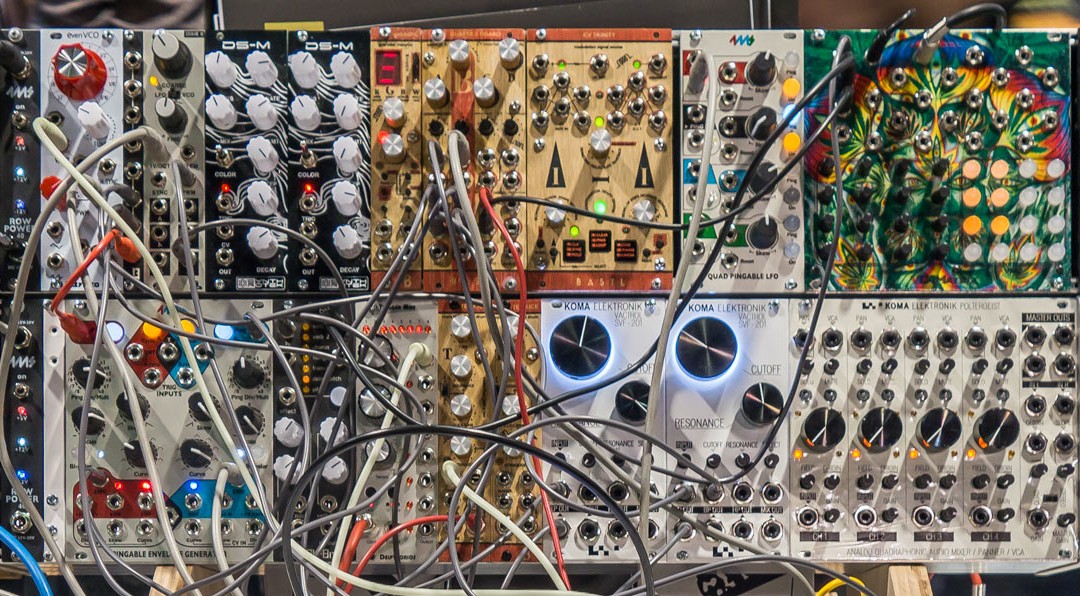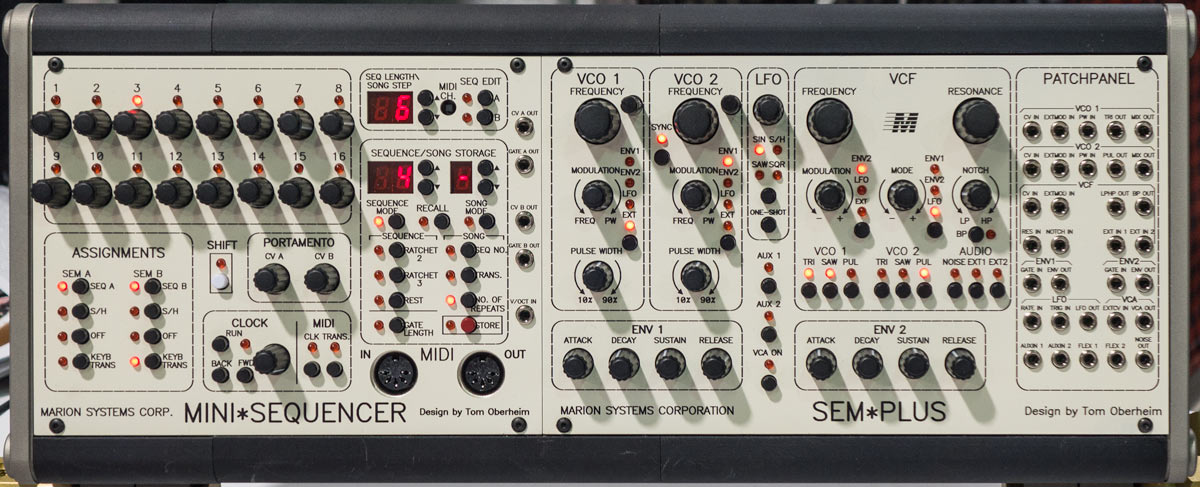I failed. I intended to visit the remaining modular manufacturers on my last half day at the show and cover all of their new releases, and fell woefully short – that’s a testament of how many manufacturers and new modules there are these days. Fortunately, there are others (like Synthtopia, Sonic State, FluxWithIt and more) who make it their job to report specs and prices on every new piece of equipment. I’m going to focus more on my own impressions and reactions to some of the new and recently released modules I did get demos of.
STG Soundlabs


The envelope curve may be continuously varied between linear and exponential, and there are various play modes including loop (“free run”). The rate of each stage may be varied from 200 microseconds (that’s extremely fast, for sharp percussive attacks as well as for creating tiny “snick” sounds) to 100 seconds across three different ranges. In addition to voltage control for each of the slider-controlled parameters plus individual gate outputs for each stage, the STG Envelope Generator also connects to their internal Time Buffer clock bus to follow a master clock that may be distributed throughout a system, including to their sequencing modules. In this mode, the sliders are aware of where beats fall and don’t actually change settings until the next beat, which is a boon for pre-setting controls before the next beat during a live performance. Price is not set yet; it will probably be between $300 and $400.
Detachment 3
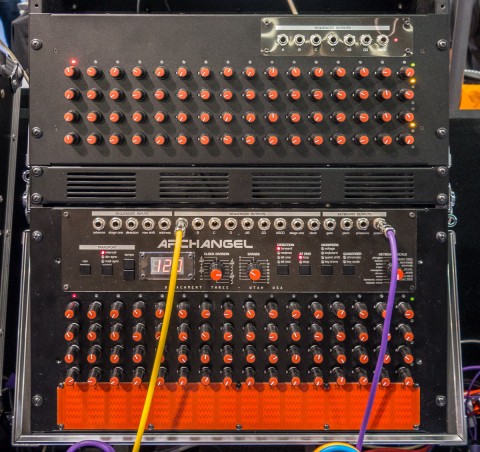
While Joe was describing the Archangel’s touch plate keyboard that can measure vertical position as well as “pressure” (more on that when we get to Pittsburgh Modular), engineer extraordinaire Gene Stopp of Moog Music joined us. Gene pulled out his smart phone, tapped its face, and noted that these devices are the reason why we’re seeing touch keyboards appear from so many manufacturers these days (Sputnik and Verbos included) – the chips that help decode finger position and the such have become ubiquitous, and therefore a lot less expensive to include in designs.
4ms Pedals
Although 4ms did not have a lot new to show (they were downplaying the one prototype in their booth as being very preliminary), I had a really good chat with Dan Green about a few subjects, including their Spectral Multiband Resonator (SMR). In addition to creating formant-style filtering to simulate the resonating chamber in some acoustic instruments, I’m interested in the multiband envelope following several of these modules offer. A lot of my personal work is based on using acoustic percussion loops as the source material to trigger other sounds or modulate a vocoder. Having multiple envelope followers dedicated to specific frequency bands means I can tease out individual instruments as trigger sources. Dan explained that not only can the SMR output an envelope follower voltage based on the amplitude in each frequency band with two levels of smoothing, it can also output a trigger (reducing the need to use an external comparator to derive a trigger from the envelope follower’s output).
We also talked about power. I’ve heard good things about 4ms power supplies; they’re one of the companies using a two-step process where an external power supply provides 18v, and then they regulate it a second time internally to the +/–12 required by Eurorack modules.
In other news, the long-anticipated Dual Looping Delay (DLD) designed by Gary Hall of Lexicon PCM42 fame is near shipping – “spring” is being quoted. Also on display was a prototype of a dual triggered sampler. I often play back short vocal drops or longer ambience beds as part of my live performance, and had been frustrated by the 22kHz sample rate (half the bandwidth of a CD) of many Eurorack sample playback modules; Dan assured me he was looking at 96kHz sample rate support at a high bit depth.
Pittsburgh Modular
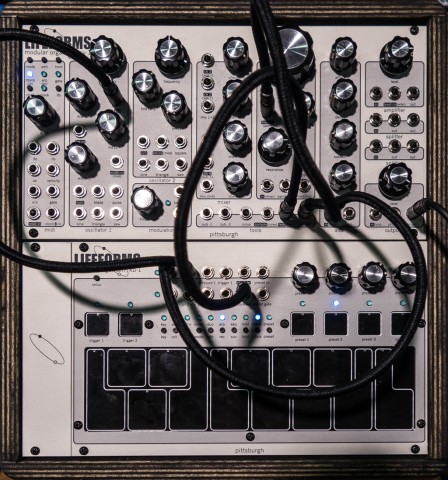
They also have a nice little touch-sensitive keyboard with mono and duophonic modes, arpeggiator, voltage preset memories (which can be used a sequencer), and clock sync for $499. Like many touch-sensitive keyboard, they bill the Lifeforms KB-1 as “pressure” sensitive, but what they keyboards are actually doing is measuring the surface area of your finger on the pad – which increases as you press harder. Another approach to playing these is to roll your finger from the tip to flat against the pad, which gives greater variation in surface area and control.
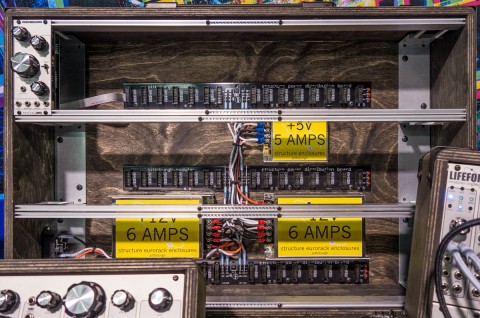
Expert Sleepers
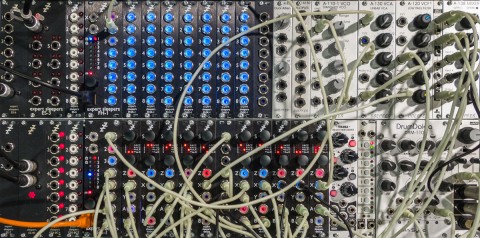
I also talked to Os about my plans to use Ableton Live with my modular, and he recommended I look into the Expert Sleepers ES-3 Lightpipe/CV interface. Not only can it be used to send control voltages and gates from the computer to a modular, it can also send audio (limited to the old ADAT spec of 48 kHz/16 bits if you want to use all 8 channels, or 96 kHz if you double up channels). Several users have reported success with this – the ES-3 is not a platinum high-end audio interface, but it seems to be perfectly fine for a lot of work. After the show, I also chatted with Jim Coker (creator of the Five12 Numerology sequencing software) who says Numerology can also take advantage of the Expert Sleepers hardware. The results overall seem to give tighter timing than using MIDI as a messenger between the computer and modular system.
William Mathewson Devices (WMD)
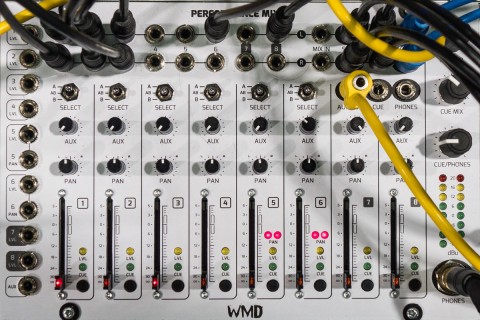
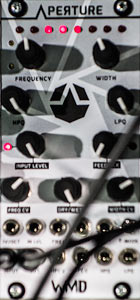
Qu-Bit Electronix
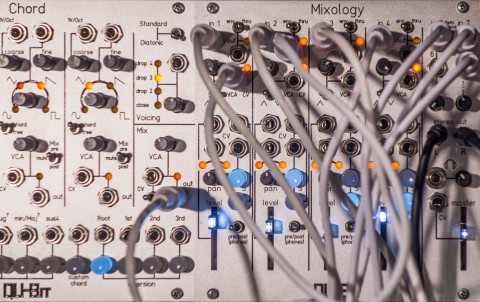
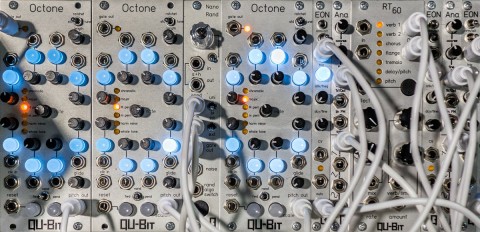
The Ana follows in the footsteps of their popular Eon 2 hp digital square wave oscillator/noise source/envelope generator. In this case, Ana is an analog VCO with multiple waveshapes and FM (there was some confusion at the show about whether or not it supported through-zero frequency modulation; apparently it does not). Its price is supposed to be $150, like the Eon. I’ve been looking for some simple oscillators to tune to intervals to my otherwise complex “main” VCOs; this is certainly a space-efficient candidate.
Doepfer Musikelektronik
Eurorack modular synthesizer founding father Dieter Doepfer had a slew of announcements for NAMM, including black faced “vintage” versions of a collection of modules, more special color schemes including classic cream for their A-106-5 SEM VCF (a personal favorite), the upcoming A-121-2 12dB/octave multimode filter based on their Dark Energy II tabletop synth, the A-168-1 PWM module, A-184-1 combination ring modulator/S&H/slew limiter module, and two new oscillators featuring through-zero frequency modulation, based on a couple of different core circuits: the triangle core A-110-3, and the very new trapezoid core A-110-6.
Dieter said the A-110-6 is based on a new oscillator design idea first put forward by Don Tillman in 2003; the original design was implemented digitally, but Dieter figured out how to implement it in analog. The “core” of an oscillator creates a basic waveform; all of the other waveshapes offered by that oscillator are derived from this core waveshape using additional circuitry. In the case of the trapezoid core, it creates two different versions of the trapezoid (which has a sound between a triangle and a sawtooth) that are 90 degrees out of phase. If you add them together, and you get a triangle; subtract them, and you get a triangle that’s 90 degrees out of phase. More details can be found on the web page for the A-110-6.
By the way, those wild graphics for the new modules will not be offered commercially; they are “design studies.” However, Doepfer plans to release the graphics templates for these modules so you can add in your own graphics and print out your own custom faceplates using self-adhesive foil and a laser printer.
Tom Oberheim
I ended my NAMM visit by catching up with Tom Oberheim, who I worked for over 25 years ago at Marion Systems. Although there was a huge buzz around the new OB-6 announced by Dave Smith Instruments (Dave was another former boss of mine, at Sequential Circuits), Tom himself continues to offer modern the SEM Plus two-VCO full synthesizer voice is due this year at a price of $899. Improvements over the original SEM include a full ADSR (instead of the original Attack/Sustain/Decay), a triangle wave added to the VCOs, additional LFO waveforms with an LFO one-shot mode, and a MODE control that allows additional flexibility for modulating the pan between LP and HP (one of my favorite features of the SEM’s filter). The patch panel includes many breakout points including voltage control over parameters such as the VCF resonance.
Tom is also offering his expanded Mini Sequencer – a component of both the original and newly-updated Oberheim Two-Voice – in Eurorack for $599 with up to 16 steps, two simultaneous sequences, MIDI support, and sequence memory including the ability to string sequences together into songs. He’s also added a ratcheting feature to it. Unfortunately, ratcheting requires a higher clock input speed (or an internal phase-locked loop to synthesize a higher tempo from the original clocks) to create the repeats per step, so external clock input is not looking like it’s going to be offered.
My apologies to all the companies I missed; I really wanted to get to you too. Maybe I’ll have to go to Knobcon this fall (September 9-11, 2016) to atone for my sins. (And discover more modules to buy…)

